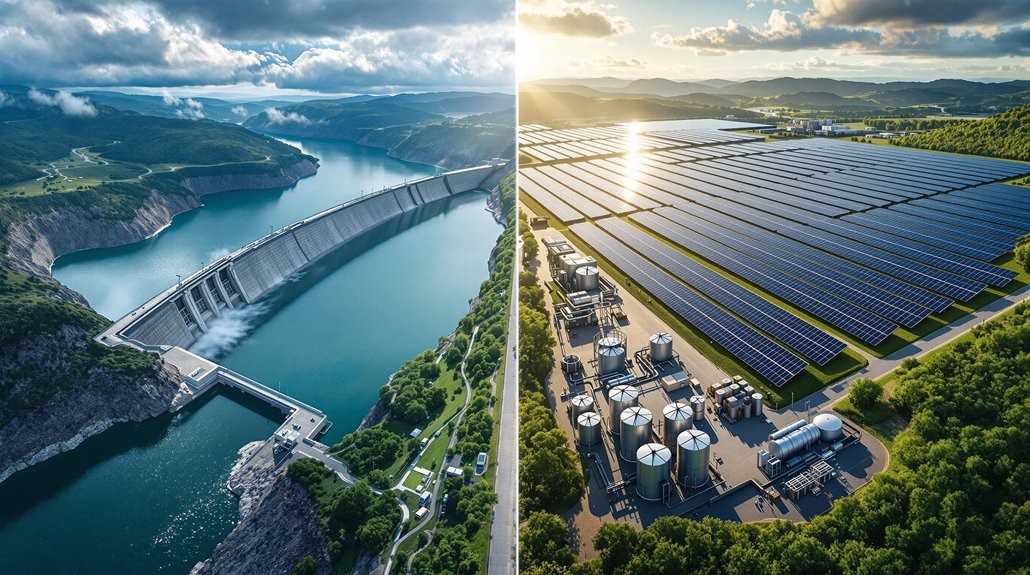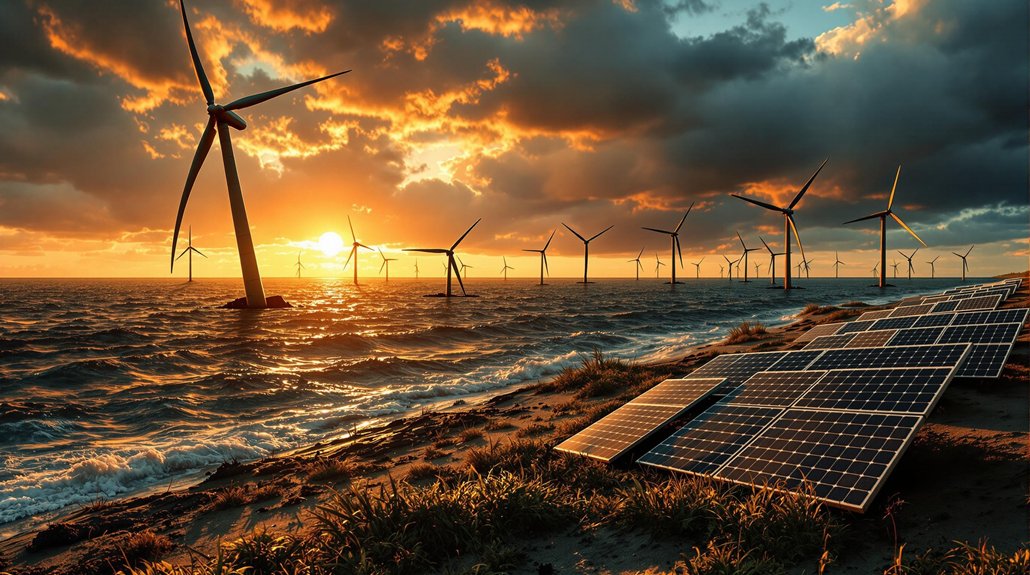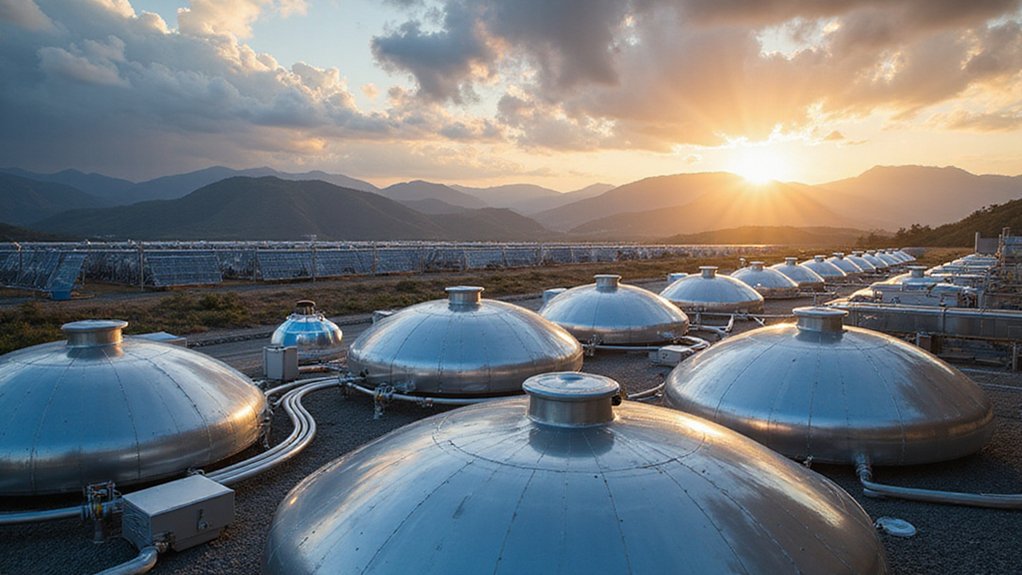Green hydrogen faces a classic energy dilemma: high production costs versus environmental benefits. While hydropower has traditionally dominated clean electricity for hydrogen production, solar is making a stunning comeback. With solar panel costs down 80% since 2010 and superior scalability, the sun’s power is challenging hydropower’s reign. Infrastructure remains a massive hurdle either way. Efficiency issues still plague the process, losing 20-40% during electrolysis alone. The hydrogen revolution’s success depends on picking its battles wisely.
Why is everyone suddenly obsessed with green hydrogen? It’s because this zero-emission fuel promises to decarbonize industries where electricity just can’t cut it. Made by splitting water molecules through electrolysis powered by renewable electricity, green hydrogen produces nothing but water when used. No carbon. No pollution. Just clean energy. Sounds perfect, right?
Not so fast. Green hydrogen faces a massive economic hurdle: it’s expensive. Really expensive. Production costs tower over fossil fuel-based hydrogen, with electricity accounting for a whopping 70% of those costs. And that’s before we tackle the infrastructure problem.
Green hydrogen’s biggest enemy? Its price tag. Renewably splitting water molecules costs a fortune.
We simply don’t have the pipelines, storage facilities, or refueling stations needed for widespread hydrogen adoption. Existing natural gas pipelines can only handle hydrogen blends up to 20%. Beyond that? We need new materials, new infrastructure, new everything. Ka-ching!
Then there’s the efficiency conundrum. Electrolysis is only 60-80% efficient, and that’s before accounting for compression, liquefaction, and transport losses. Simply using electricity directly is far more efficient. But efficiency isn’t everything. Unlike traditional hydrogen production methods that rely on fossil fuels, electrolysis offers a pathway to truly sustainable hydrogen generation with zero carbon emissions.
Solar power is changing the game. As solar electricity costs plummet, the economics of green hydrogen improve dramatically. The dramatic 80% cost reduction in solar panels since 2010 makes integrating solar with hydrogen production increasingly viable. Hydropower has long been the go-to for stable renewable energy, but solar’s scalability and decreasing costs may soon make it the preferred power source for hydrogen production. The integration of battery storage systems with solar installations helps manage intermittency issues and supports continuous hydrogen production even when the sun isn’t shining.
Despite these challenges, the potential market is staggering – projected to hit $200 billion by 2030. Over 30 countries have already released hydrogen strategies, with the EU targeting 40 GW of electrolyzer capacity by this deadline.
The hard truth? Green hydrogen isn’t the silver bullet some claim. It’s one tool in our climate fight toolkit. Perfect for hard-to-abate sectors like steel production and long-haul shipping, but overkill for applications where direct electrification works fine.
The real dilemma isn’t whether green hydrogen has a future – it’s figuring out exactly where it fits in our energy evolution.









